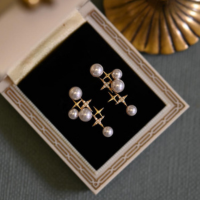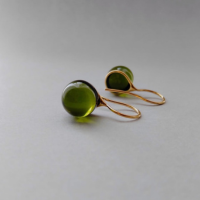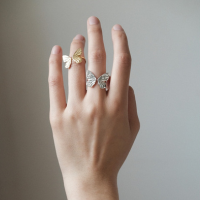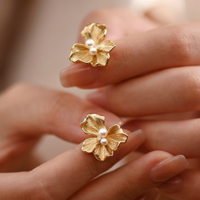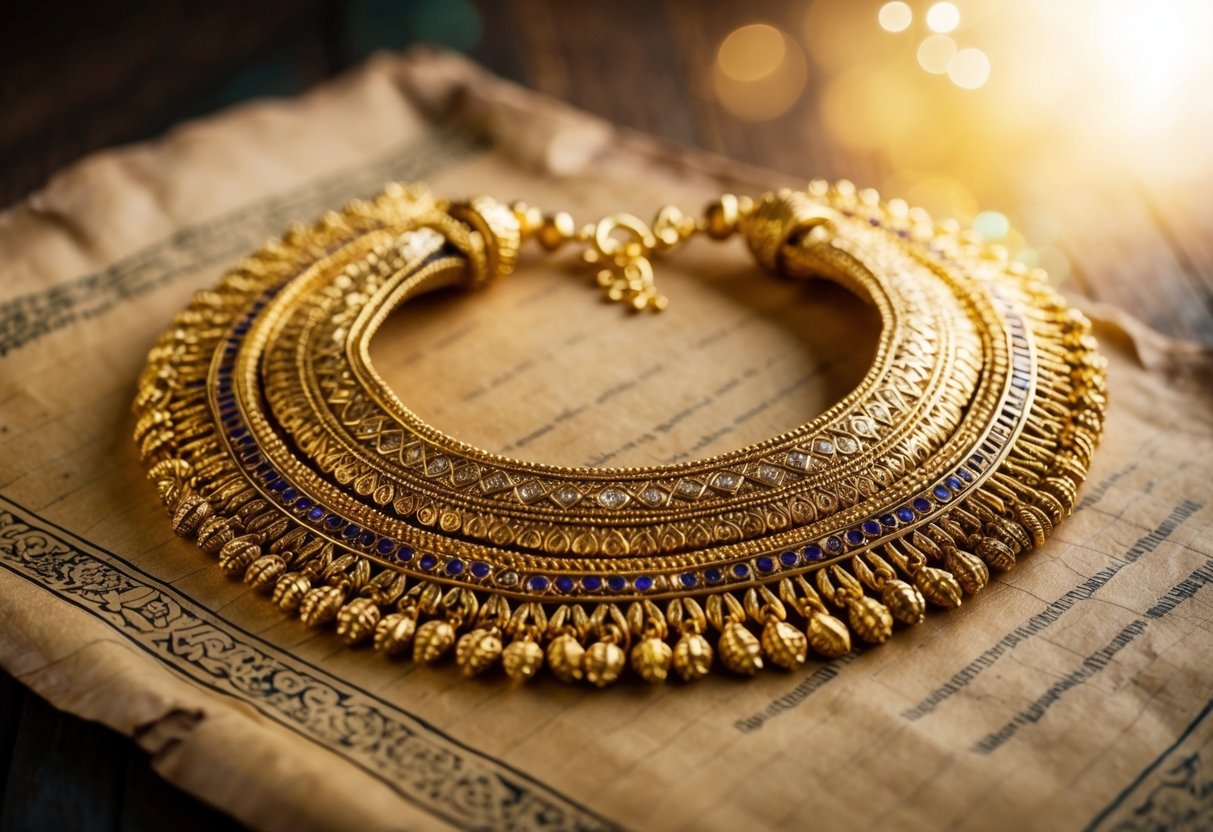
What Does the Bible Say About Jewelry
Check out our personalized jewelry collections! (kids drawing jewelry, coin jewelry, wire jewelry, fingerprint jewelry, handwriting jewelry, and more)
The Bible has many passages about jewelry, offering insights into its spiritual and cultural significance. In Biblical times, jewelry often represented wealth, status, and beauty, but it could also symbolize faith and devotion. These reflections provide a fascinating look at how jewelry fits into the lives of believers and the church's history.
Different books in the Bible present diverse viewpoints on wearing jewelry. While some scriptures highlight the beauty of adornment, others warn against excessive focus on outward appearances. This range of ideas invites us to reflect on how we choose to express ourselves today.
Jewelry in the Bible also holds symbolic meanings, such as representing promises or covenant relationships. By exploring its use in rituals and as a metaphor for spiritual truths, we can better appreciate how these ancient texts continue to inform our personal choices and values.
Key Takeaways
- Jewelry holds significant meanings in the Bible.
- Scripture offers varied perspectives on adornment.
- Jewelry symbolism links to faith and relationships.
Biblical Perspectives on Jewelry
In the Bible, jewelry often signifies wealth, status, and beauty. It reflects both positive and negative associations depending on the context and behavior described.
Old Testament References
In the Old Testament, jewelry is seen in various instances. Abraham’s servant gifted Rebekah with a gold nose ring and bracelets as symbols of wealth and marriage proposal (Genesis 24:22).
The Israelites were instructed to remove their ornaments as a sign of repentance after worshipping the golden calf (Exodus 33:4-6). Jewelry was melted to create the calf which led to idol worship, showing both its value and potential misuse.
Prophetic books sometimes use jewelry to describe Israel. Ezekiel 16 depicts God adorning Israel with fine jewelry, symbolizing His blessing and love. Yet, misuse of such gifts could lead to idolatry or pride.
Overall, the Old Testament paints a complex picture of jewelry, emphasizing its cultural and spiritual implications.
New Testament Context
In the New Testament, jewelry is mentioned less frequently but holds significance in illustrating modesty and humility. Paul advises women in 1 Timothy 2:9 not to adorn themselves with costly jewelry but to focus on good deeds, reflecting inner beauty.
Peter echoes this sentiment in 1 Peter 3:3-4, urging modesty by prioritizing a gentle spirit over outward adornment. This aligns with the Christian emphasis on character over appearances.
Despite these admonitions, jewelry is not condemned outright. Instead, it's the attitude and intention behind wearing it that are highlighted. Jewelry can be worn, provided it doesn't become a source of pride or distraction from faith.
Symbolic Meanings of Jewelry in the Bible
In the Bible, jewelry often represents both wealth and spiritual significance. It often highlights one's social standing while also symbolizing deep religious beliefs.
Jewelry as Symbols of Wealth and Status
In many Bible stories, jewelry is a sign of wealth and status. Genesis 24:53 tells us that Abraham’s servant gave Rebecca gold and silver jewelry. This was to show the wealth of Isaac’s family and to secure a marriage alliance. Jewelry was a sign that the family was wealthy and powerful.
We also see in Ezekiel 16 that God speaks of adorning Jerusalem with bracelets, rings, and a crown. These images convey richness, beauty, and grandeur. People of importance wore such adornments to signify their high position in society.
Spiritual Significance of Ornaments
Jewelry in the Bible also holds spiritual meanings. In Exodus 28:2–4, the high priest’s garments were adorned with gems. Each stone represented the twelve tribes of Israel. This shows that jewelry can be a part of spiritual practice and identity.
In the story of the Prodigal Son, the father puts a ring on his son’s finger. This is not just about wealth but about restoration, acceptance, and the son’s reintegration into the family. The ring signifies more than material value; it is a symbol of renewal and belonging.
These stories illustrate that jewelry in biblical texts often holds both material and spiritual meanings, enriching their narratives with deeper symbolism.
Guidelines for Adornment
The Bible offers insights on how we should think about wearing jewelry. It emphasizes modesty and humility, and it contrasts adornment with inner beauty. Let’s explore what that means for us today when choosing to wear jewelry.
Modesty and Humility
We learn that modesty is an important biblical principle. It means not drawing too much attention to ourselves through our appearance. This doesn’t mean we can’t wear jewelry. Instead, it suggests that we should focus on simplicity and grace.
Humility is valued as well. Our appearance should reflect our inner values and respect for others. This encourages us to choose pieces that are meaningful rather than flashy or extravagant.
Adornment vs. Inner Beauty
When we think about jewelry, it’s easy to focus on the outside. Yet, the Bible reminds us that true beauty comes from within. Qualities such as kindness, patience, and love are the real treasures.
Wearing jewelry shouldn’t overshadow who we are inside. When we choose pieces, we can consider how they express our inner beauty. Our real adornment is our character, and jewelry can be a reflection of that.
Diverse Interpretations by Christian Denominations
Jewelry is seen differently across Christian denominations. Some take a conservative stance on its use, while others have a more liberal approach. Exploring these viewpoints can provide insights into how faith communities balance adornment with spiritual beliefs.
Conservative Views
For many conservative Christians, simplicity and modesty are key values. Denominations like the Amish and some Pentecostal groups often discourage wearing jewelry.
They believe that personal adornment can shift focus away from spiritual matters. Modesty is emphasized, and extravagance is often viewed as inappropriate. Verses such as 1 Timothy 2:9 encourage women to dress modestly, avoiding extravagant jewelry and hairstyles. In these communities, showing one's faith through behavior and humility is considered more important than through external appearances.
Liberal Approaches
On the other hand, several Christian groups embrace jewelry as part of self-expression and culture. Many view adornment as a personal choice that can coexist with faith.
In liberal denominations, jewelry can symbolize personal stories, celebrations, or religious milestones like baptisms or weddings. Some people admire the beauty of creation as reflected in gemstones and metals. These Christians may see less conflict between wearing jewelry and their spiritual commitments, highlighting the diversity within the faith.
Jewelry in Christian Ceremony and Symbolism
Jewelry plays a crucial role in Christian ceremonies and symbolism. It represents love, faith, and commitment.
Significance in Marriage Ceremonies
In Christian marriages, rings are the most significant pieces of jewelry. We see these rings as symbols of eternal love and commitment. Exchanged during the ceremony, these rings are often made of gold or silver and sometimes adorned with diamonds or other gemstones. The circular shape represents infinity, a bond without end.
Another important piece is the wedding necklace or pendant. Some brides wear crosses or modest pendants to show their faith. These necklaces can be cherished heirlooms or new pieces made for that special day. What matters is the meaning behind it.
Crosses and Religious Icons
Crosses are a widely recognized symbol in Christianity. They can be worn as necklaces, bracelets, or earrings. When we wear crosses, it’s a public testament to faith. Crafted from materials like gold, silver, or wood, they range from simple to ornate designs.
Aside from crosses, other religious icons like the Ichthys (fish symbol) or medals of saints are also popular. These items celebrate aspects of Christianity and remind us of specific virtues or figures in the faith. They are chosen carefully for personal significance or spiritual inspiration.
Personal Reflection and Choice
Our individual choices about wearing jewelry can be shaped by personal faith and the need to respect different perspectives. Engaging with our beliefs and understanding those of others can enrich our approach to wearing jewelry.
Balancing Personal Faith and Expression
For many of us, faith plays a key role in our daily choices. Jewelry can be more than decoration—it can express personal beliefs. Deciding what to wear may need reflecting on religious teachings to ensure choices align with our values.
We might choose pieces like cross necklaces or religious pendants. These can hold significant meaning to us and exhibit our faith to others. It's crucial to select jewelry that we feel comfortable and confident wearing. Finding harmony between personal style and faith helps us express who we are spiritually and personally.
Respecting Diverse Views within the Community
Within our communities, people may hold varying beliefs about jewelry. Being mindful of different values can foster mutual respect. Some may wear jewelry for cultural reasons, while others may avoid it for religious reasons.
Engaging in open dialogue about jewelry and faith can build understanding. When we respect diverse practices, we create more inclusive communities. By appreciating different perspectives, we enrich our own experiences with jewelry, allowing us to see its value in various contexts.
Empathy and respect guide us in celebrating diversity while honoring personal beliefs. This approach helps us connect more deeply with others, building a sense of community and shared understanding.
Frequently Asked Questions
Our exploration into what the Bible says about jewelry covers many fascinating aspects. We look at whether it's seen as a sin, the permissibility of wearing make-up, and more, with references to people in scripture and the materials used.
Is it considered a sin to wear jewelry according to Biblical scripture?
Biblical texts do not label wearing jewelry as a sin outright. Some verses advise modesty, discouraging excessive adornment that might promote vanity. These scriptures emphasize inner beauty and humility.
Can Christians wear jewelry and make-up based on Biblical teachings?
Christians are generally free to wear jewelry and make-up. The Bible suggests that one should focus on spiritual virtues rather than outward appearance. Personal choice and cultural context often play a role in how these teachings are interpreted.
What guidance does the Bible provide regarding the use of jewelry and body piercings?
The Bible mentions jewelry and body piercings in various contexts. Sometimes, it portrays them positively as gifts or signs of wealth and beauty. In other instances, it warns against their misuse when they lead to pride or idolatry.
What are the Biblical references relating to adornment with jewelry?
Throughout the Bible, jewelry is referenced frequently, from luxurious descriptions in Song of Solomon to Paul’s advice on modesty in 1 Timothy. These passages demonstrate the cultural significance of jewelry throughout biblical history.
Which individuals in the Bible are noted for wearing jewelry?
Several biblical figures are mentioned wearing jewelry. For instance, Joseph received a ring from Pharaoh, and Esther wore royal accessories to present herself to the king. These examples highlight the symbolic value jewelry held in biblical stories.
Does the Bible specify forbidden materials for jewelry and clothing?
In the Bible, specific materials for jewelry and clothing are rarely forbidden. However, certain passages in Leviticus and Deuteronomy suggest avoiding mixed fabrics and unclean items for religious reasons. The focus often remains on the spiritual over physical appearances.

